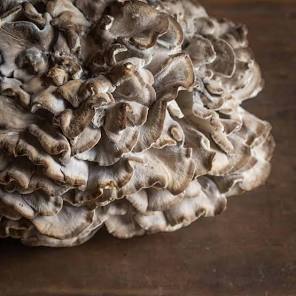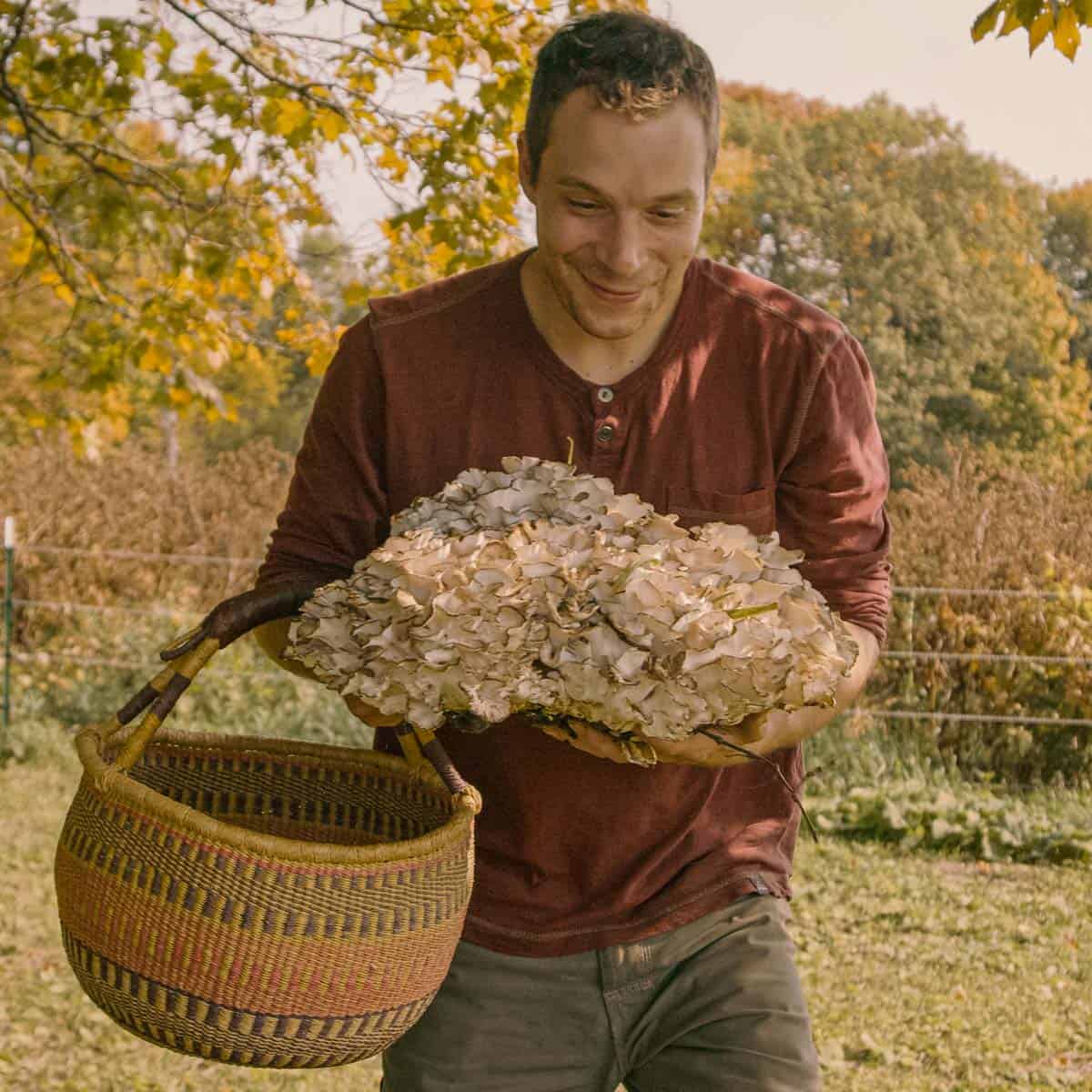In Sept these come out!
The largest hen I have ever found weighed 60 lbs.
If I find 6 0r 700 hundreds lbs I call restaurants and swap them for gift certificates.
When I walk into their kitchens they all start saying wow! lol
I have been charging $15/lb for 40 years. lol
This year I will ask $20 at least.
Also loaded with D3.
Found mostly around dying Oak trees, They grow until the first killer frost usually around Thanksgiving.
If you have oaks happy hunting.
"Hen of the Woods" is a common name for the edible polypore mushroom, also known as Maitake (Grifola frondosa)
. It gets its name from its appearance, resembling a hen sitting on a nest with its large, clustered mass of wavy, fan-shaped caps.





Here's more information about Hen of the Woods:
Identification
- Appearance: Large, clustered mass of grayish-brown, dry, spoon-shaped or fan-shaped fronds (caps) with wavy margins.
- Underside: Cream-colored underside with tiny pores (not gills).
- Stipe (Stalk): Short, branching, whitish stem.
- Size: Can be quite large, with clusters up to 3 feet wide and weighing 5-10 pounds, and sometimes even up to 50 pounds. Individual caps range from 2 to 6 inches wide.
- Spore Print: White.
- Location: Grows at the base of hardwood trees, particularly oak trees, according to the Missouri Department of Conservation. Also found in moist woodlands and river bottoms.
- Season: Typically found in late summer to early fall (September to November).
Lookalikes
While there are no known poisonous lookalikes, a few species can be mistaken for Hen of the Woods.
- Black-staining Polypore (Meripilus sumstinei): This edible mushroom also grows in clusters at the base of oaks with similar frond shapes, notes Midwest American Mycological Information. However, its fronds are thicker and stain black when handled, which is a key distinguishing feature from Hen of the Woods, whose caps do not stain.
- Berkeley's Polypore (Bondarzewia berkeleyi): This mushroom has a creamy-tan color and thicker, broader lobes compared to Hen of the Woods.
- Chicken of the Woods (Laetiporus sulphureus): While both are edible polypores with "fowl" in their names, they are not the same. Chicken of the Woods has bright orange to peachy orange caps and yellowish or orangey pores on the underside.
Culinary and medicinal uses
- Flavor: Hen of the Woods is considered a choice edible mushroom due to its firm, meaty texture and mild, earthy, slightly nutty, and spicy flavor. Wild ones are said to have a stronger flavor and tougher texture than cultivated varieties.
- Cooking: Can be eaten raw or cooked. It's excellent roasted, sautéed, stir-fried, and can be used in soups, risottos, gravies, and more. According to Ask the Food Geek, it crisps up beautifully when roasted or fried.
- Medicinal Properties: It has a long history of use in traditional Asian medicine. It's known to contain beta-glucans and is being researched for potential benefits related to blood sugar regulation, immune system modulation, and anti-cancer effects.
Foraging tips
- Look for large, old oak trees, especially those with buttress-like roots.
- Hen of the Woods often returns to the same spot year after year, so remember the locations where you've found them before.
- Look carefully, as their color can blend in with the fall leaves.
- The ideal time to harvest is when the mushrooms are young and tender, with defined caps.
- Be aware that the mushrooms may contain dirt or small creatures like insects, so clean them carefully before cooking.
- You can store cleaned Hen of the Woods in a plastic bag with a dry paper towel in the fridge for up to a week, or freeze or dry them for longer storage.
Hen of the Woods is a popular and delicious mushroom, both for culinary and potential medicinal uses. It's a great choice for beginners looking to forage for mushrooms, as it's relatively easy to identify with no dangerous lookalikes.
AI responses may include mistakes. Learn
 |





